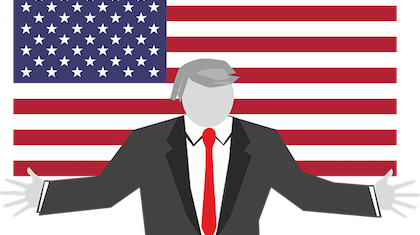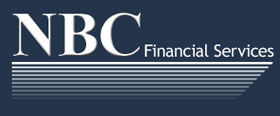
A key policy of the newly installed Trump administration is to dramatically change the taxation regime. Surprisingly, the US has one of the highest corporate tax rates in the world.
High levels of corporate tax are cited as one reason why US manufacturing has been uncompetitive and the Trump administration believes it can address taxation and address it quickly given control of both houses of Congress.
There are several proposed tax changes which we summarise below. Given we invest in Australian equities, our interest is on the potential implications for Australian listed companies with US operations.
Chart 1: Corporate tax rates
| Country | Corporate tax rate (%) |
| Australia | 30 |
| Britain | 20 |
| China | 25 |
| France | 33.3 |
| Germany | 29.65 |
| Italy | 31.4 |
| Japan | 30.1 |
| OECD average | 25.9 |
| United States | 35 |
Source: KPMG, as at February 2017
Reducing the corporate tax rate
The current statutory US corporate tax rate is 35%. Many companies also pay a form of state-based tax (according to their operational jurisdiction). As Chart 1 highlights, this corporate tax rate is high and a key reason many US companies do not repatriate offshore earnings.
Repatriation – mandatory tax on overseas profits
Repatriation is a globally contentious issue. Transferring profits from high taxing to low taxing jurisdictions has become commonplace amongst multinationals. However, the money tends to stay in the low taxing countries, limiting reinvestment opportunities. The new US administration wants to allow US-domiciled multinationals to repatriate offshore funds at tax rates as low as 10%.1 Given reinvestment opportunities are typically higher in the US, this should encourage companies to return money and reinvest. It is also a way of funding an infrastructure investment pool, with the 10% repatriation tax used as seed capital.
Border adjustment tax
The border adjustment tax is the most contentious of the proposals as it is not fully endorsed across the Republican Party. A border adjustment tax removes the tax deductibility of goods imported and onsold into the US. This includes whole items, like clothing for retailers, or componentry manufactured elsewhere and used in US manufacturing, like car parts or electronic circuitry. Chart 2 provides an example of its impact on profitability.
A border tax clearly favours local manufacturing over imports. It is protectionist, which is why it is not fully endorsed.
Removal of interest expense deductibility
One of the great criticisms of US corporates post the recession has been a willingness to borrow funds to buy back shares rather than invest into their businesses. The removal of interest expense deductibility is aimed at reducing the attractiveness of debt-funded share buy-backs.
Australian implications
To analyse some of the likely impacts on Australian companies operating in the US, Chart 3 details listed Australian companies with significant US exposure (based on revenue). The list is clearly dominated by healthcare and industrials.
Prima facie, most of these Australian companies will benefit from the lower US corporate tax rate which will boost earnings, but the overall impact is much more varied. For example:
-
Healthcare companies generally import the goods they sell in the US. Hence under a border tax, they might lose some proportion of the cost of goods sold expense previously allowed, boosting profit for tax purposes. Depending on each company’s reported margin, the impact may well reduce earnings on an after-tax basis, despite the lower corporate tax rate, as shown in Chart 2.
-
Aristocrat Leisure (ALL) manufactures goods in the United States from imported componentry. Hence ALL is likely to experience a benefit from a lower tax rate but the mix of imported and locally sourced costs in its cost of good sold line will determine whether it benefits from the changes or not. Analysing the various outcomes and sensitivities is a key focus for Antares given we are overweight ALL in some portfolios.
-
Sims Metal Management (SGM) is a potential beneficiary of the changes. SGM is a net exporter from the United States – it collects and processes scrap metal in the US and ships this abroad. Under a border tax (Chart 2 above), revenue from those export sales would not be recognised for tax purposes, thus providing significant tax credits.
Chart 2: Border adjustment tax – an example2
| Current | Border tax (Imports) | Border tax (Exports) | |
| A: Revenue | $100 | $100 | $100 |
| a: Export revenue | $100 | ||
| B: Cost of goods sold (COGS) | $50 | $50 | $50 |
| b: Imported inputs in COGS | $50 | ||
| C: Other costs | $25 | $25 | $25 |
| D: Total costs (B+C) | $75 | $75 | $75 |
| E: Total costs adjusted for border tax (B+C-b) | $75 | $25 | $75 |
| F: Actual operating profit (A-D) | $25 | $25 | $25 |
| G: Operating profit for tax calculation ((A-a)-E) | $25 | $75 | -$75 |
| H: Tax rate | 35% | 20% | 20% |
| J: Tax payable (H*G) | $9 | $15 | -$15 |
| Net profit after tax (NPAT) (F-J) | $16 | $10 | $40 |
| Border tax impact on NPAT | -38% | 250% |
Source: Antares. Example is for illustrative purposes only
Chart 3: Australian listed companies – North American sales
| Company |
Sales FY16 (%) |
Category |
| Aristocrat Leisure | 59 | Gaming |
| Amcor | 31.8 | Packaging |
| Ansell | 42.7 | Health |
| BlueScope Steel | 28.5 | Steel |
| Brambles | 47.5 | Logistics |
| CSL | 40.7 | Health |
| Cochlear | 43.3 | Health |
| Flight Centre | 12.5 | Retail |
| Incitec Pivot | 34 | Materials |
| Orora | 50.5 | Packaging |
| Resmed | 61.1 | Health |
| Sims Metal Management | 50.6 | Steel |
| Sonic Healthcare | 22 | Health |
Source: Antares
If you would like to discuss anything in this article, please call us on (08) 8723 9822.
1.‘The great overseas cash grab’, The New York Times, 5 April 2017.
2. Any general tax information provided in this publication is intended as a guide only and is based on our general understanding of existing and proposed taxation laws.
Important information
This publication is provided by Antares Capital Partners Limited (ABN 85 066 081 114, AFSL 234483) (ACP) a member of the group of companies comprised National Australia Bank Limited (ABN 12 004 044 937, AFSL 230686), its related companies, associated entities and any officer, employee, agent, adviser or contractor therefore (‘NAB Group’). Any references to “we” include members of the NAB Group. An investment in any product or service referred to in this publication does not represent a deposit or liability of, and is not guaranteed by NAB or any other member of the NAB Group.
This information may constitute general advice. It has been prepared without taking account your objectives, financial situation or needs and because of that you should, before acting on the advice, consider the appropriateness of the advice having regard to your personal objectives, financial situation and needs.
Any opinions expressed in publication constitute our judgement at the time of issue and are subject to change. Neither ACP nor any member of the NAB Group, nor their employees or directors give any warranty of accuracy, not accept any responsibility for errors or omissions in this publication. Examples are for illustrative purposes only.
Any general tax information provided in this publication is intended as a guide only and is based on our general understanding of taxation laws. It is not intended to be a substitute for specialised taxation advice or an assessment of your liabilities, obligations or claim entitlements that arise, or could arise, under taxation law, and we recommend you consult with a registered tax agent.
This information is directed to and prepared for Australian residents only.
